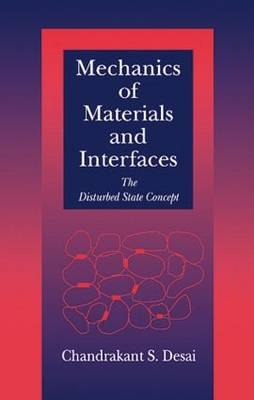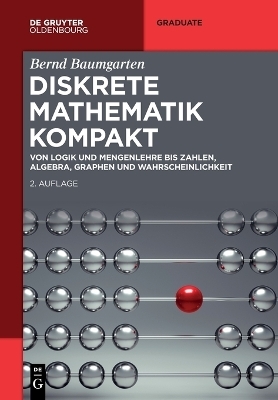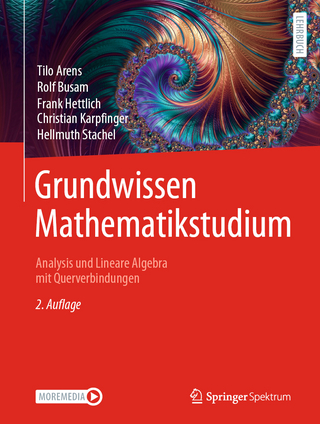
Mechanics of Materials and Interfaces
Crc Press Inc (Verlag)
978-0-8493-0248-0 (ISBN)
- Titel ist leider vergriffen;
keine Neuauflage - Artikel merken
The disturbed state concept (DSC) is a unified, constitutive modelling approach for engineering materials that allows for elastic, plastic, and creep strains, microcracking and fracturing, stiffening or healing, all within a single, hierarchical framework. Its capabilities go well beyond other available material models yet lead to significant simplifications for practical applications. Until now, however, there has been no resource that fully describes the theory, techniques, and potential of this powerful method.
Mechanics of Materials and Interfaces: Disturbed State Concept presents a detailed theoretical treatment of the DSC and shows that it can provide a unified and simplified approach for mathematical characterization of the mechanical response of materials and interfaces. Within this comprehensive treatment, the author:
Compares the DSC with other available models
Identifies the physical meaning of the relevant parameters and presents procedures to determine them from laboratory test data
Validates the DSC models with respect to laboratory tests used to find the parameters and independent tests not used in the calibration
Implements the models in computer procedures
Validates those procedures by comparing predictions with observations from simulated and field boundary value problems
Solves problems from a variety of disciplines, including civil, mechanical, and electrical engineering
If you are involved in the mechanics of materials, you owe it to yourself to explore the disturbed state concept. Mechanics of Materials and Interfaces provides the first-and to date, the only-comprehensive means of doing so.
INTRODUCTION
Prelude
Philosophical
Motivation
Reference States
Engineering Materials and Matter
Continuous , Discontinuous or Mixture
Transformation and Self Adjustment
Disturbed Sate Concept
Disturbance and Damage Models
DSC and Other Models
Scope
THE DISTURBED STATE CONCEPT: Preliminaries
Introduction
Engineering Behavior
Mechanism
Fully Adjusted State
Characteristic Dimension
Observed Behavior
Formulation of DSC
Alternative Formulations of DSC
Material Element Composed of Two Materials
DSC-Multi -Component System
DSC For Porous Media
Composite Materials
Bonded Materials
Self Organized Criticality
RELATIVE INTACT AND FULLY ADJUSTED STATES AND DISTURBANCE
Specializations
Disturbance and Function
Laboratory Tests
Stiffening or Healing
Representations of Disturbance
Creep Behavior
Rate Dependence
Disturbance Based on Disorder (Entropy) and Free Energy
Material Parameters
DSC EQUATIONS AND SPECIALIZATIONS
Relative Intact Response
Fully Adjusted Response
Specializations
Thermal Effects
Disturbance Models
DSC With and Without Relative Motions
Critical State for FA Response
DSC Euqations with Critical State
Strain Equations
General Formulation
Examples 1 to 4
THEORY OF ELASTICITY IN DSC
Linear Elasticity
Nonlinear Elasticity
Relative Intact Behavior
Fully Adjusted Behavior
Disturbance Function
Material Parameters
Thermal Effects
Examples 1 to 8
THEORY OF PLASTICITY IN DSC
Mechanisms
Theoretical Development
Continuous Yielding or Hardening
To Hierarchical Single Surface Models
Incremental Equations
Parameters and Determination from Laboratory Tests
Thermoplasticity
Examples 1 to 7
HIERARCHICAL SINGLE SURFACE PLASTICITY MODELS IN DSC
Basic HISS Model
Specializations of HISS Model
Material Parameters
Thermal Effects
Rate Effects
Repetitive Loading
Derivation of Elastoplastic Equations
Incremental Iterative Analysis
Correction Procedures
Thermoplasticity
Examples including Validations 1 to 16
Sensitivity Analysis
CREEP BEHAVIOR: VISCOELASTIC AND VISCOPLASTIC MODELS
Elastoviscoplastic Model (Perzyna)
Mechanism of Viscoplastic Solution
Elastoviscoplastic Equations
One-Dimensional Formulation of Perzyna's Model
Disturbance Function
Finite Element Equations
Rate Dependent Behavior
Parameters for Viscoplastic Model
Temperature Dependence
Multi-component DSC and Overlay Models
Specializations: Elastic(e), Viscoelastic(ve), Elastoviscoplastic(evp),
Material Parameters in Overlay Models
Examples 1 to 9
DSC FOR SATURATED AND UNSATURATED MATERIALS
Brief Review
Fully Saturated Materials
Equations
Terzaghi's Equation
Incremental DSC Equations
Disturbance
Effective Stress Parameter
Residual Flow Concept
HISS and DSC Models
Softening, Degradation and Collapse
Material Parameters
Examples 1 to 3
DSC FOR STRUCTURED AND STIFFENED MATERIALS
Definition of Disturbance
Structured Soils
Dislocation, Softening and Stiffening
Reinforced and Jointed Systems
Equivalent Composite
Individual Solid and Joint Elements
Rest Periods: Unloading
Examples 1 to 3
DSC FOR INTERFACES AND JOINTS
General Problem
Review
Thin Layer Interface Model
Disturbed State Concept
Disturbance Function
Incremental Equations
Determination of Parameters
Mathematical and Physical Characteristics of DSC
Testing
Examples 1 to 11
Computer Implementation
MICROSTRUCTURE, LOCALIZATION AND INSTABILITY
Microstructure
Wellposedness
Localization
Nonlocality and Characteristic Dimension
Regularization and Nonlocal Models
Rate Dependent Models
Continuum Damage Model
Nonlocal Continuum
Strain and Energy Based Models
Gradient Enrichment of Continuum Models
Cosserat Continuum
Stability
Disturbed State Concept: Nonlocality, Micro-crack Interaction, Characteristic
Mesh Dependence
Instability
Approximate Decoupled DSC
Stability Analysis of DSC
Examples 1 to 4
Appndix 12-1: Thermodynamical Analysis of DSC
IMPLEMENTATION OF DSC IN COMPUTER PROCEDURES
Finite Element Formulation
Solution Schemes
Algorithms for Creep Behavior
Algorithms for Coupled Dynamic Behavior
Partially Saturated Systems
Cyclic and Repetitive Loading
Initial Conditions
Hierarchical Capabilities and Options
Mesh Adaption Using DSC
Examples of Applications: Field and Laboratory Simulated Tests 1 to 12
CONCLUSIONS AND FUTURE TRENDS
APPENDIX I : DISTURBED STATE, CRITICAL STATE AND SELF ORGANIZED
CRITICALITY CONCEPTS
APPENDIX II : DSC PARAMETERS, OPTIMIZATION AND SENSITIVITY
| Erscheint lt. Verlag | 20.12.2000 |
|---|---|
| Zusatzinfo | 1125 equations; 62 Tables, black and white; 600 Illustrations, black and white |
| Verlagsort | Bosa Roca |
| Sprache | englisch |
| Maße | 156 x 235 mm |
| Gewicht | 1170 g |
| Einbandart | gebunden |
| Themenwelt | Mathematik / Informatik ► Mathematik |
| Technik ► Maschinenbau | |
| ISBN-10 | 0-8493-0248-X / 084930248X |
| ISBN-13 | 978-0-8493-0248-0 / 9780849302480 |
| Zustand | Neuware |
| Informationen gemäß Produktsicherheitsverordnung (GPSR) | |
| Haben Sie eine Frage zum Produkt? |
aus dem Bereich


